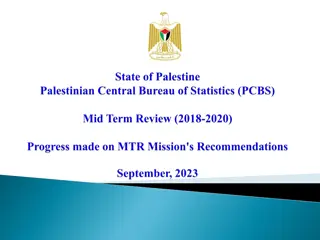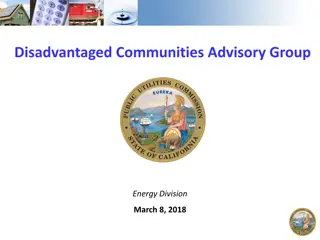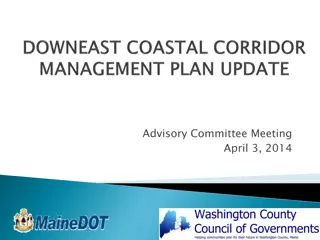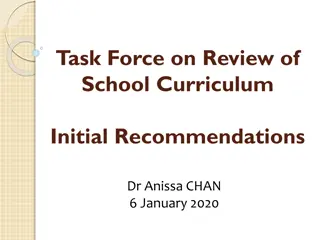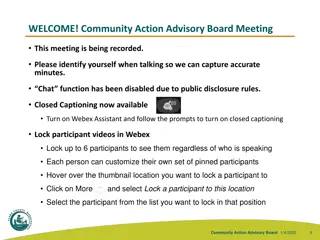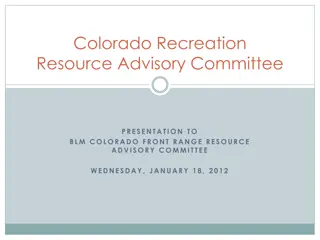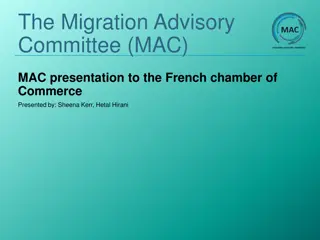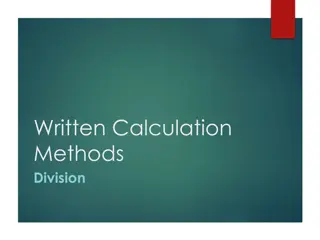Understanding the Planning Advisory Service: Key Facts and Recommendations
The Planning Advisory Service (PAS) is a vital resource for local planning authorities, funded by DCLG and established in 2004. This service aims to enhance planning services, drive improvements, and navigate changes within the planning system. PAS supports, promotes, and innovates planning practices, emphasizing the importance of Objectively Assessed Need (OAN) and Five-Year Land Supply. Key issues include housing market areas, methodologies, deliverability, and affordability. Recommendations highlight the significance of starting with the correct geography, acknowledging the absence of a single correct answer in OAN assessments, and consistency in planning assumptions. Utilize PAS resources and sensitivity tests to enhance planning effectiveness and responsiveness.
Download Presentation

Please find below an Image/Link to download the presentation.
The content on the website is provided AS IS for your information and personal use only. It may not be sold, licensed, or shared on other websites without obtaining consent from the author. Download presentation by click this link. If you encounter any issues during the download, it is possible that the publisher has removed the file from their server.
E N D
Presentation Transcript
OAN and 5 year land supply Taking the devil out of the detail www.pas.gov.uk
What is Planning Advisory Service for? The Planning Advisory Service (PAS) is part of the Local Government Association. The purpose of PAS is to support local planning authorities to provide effective and efficient planning services, to drive improvement in those services and to respond to and deliver changes in the planning system (Grant offer letter for 2014-15)
Key Facts Started in 2004 Funded by DCLG 11 staff. Supplier framework. Peer community. Always subsidised. Mostly without charge. Non-judgemental. Not inspectors Respond to reform. Keep you current Support, promote, innovate
Objectively Assessed Need and Five Year land Supply - Conditions for success
Key Issues https://encrypted-tbn0.gstatic.com/images?q=tbn:ANd9GcRL9LX5wSejttZ3-G7t-LE1ALmna15IA0djK913ZnFIRHnNtUqN7A Housing Market Areas Methodologies Evidence base Timeframes Requirement v provision Deliverability Affordability Market signals Duty to cooperate Constraints https://encrypted-tbn3.gstatic.com/images?q=tbn:ANd9GcS5VZ-2wFSbna9D6FwKwRHor8djDuFpUvd6JErQuIWWj1HlitGPtw
OAN Three simple points A) Start with the correct Geography B) Understand is no one correct answer C) Whatever answer you get make it consistent with other chapters of the plan
OAN Geography If you start with the wrong HMA geography It is very difficult to correct half way through If in doubt safer to include in the numbers you run Caveat where needed; i.e. this LPA is poorly linked to the rest of the HMA Note applies to the main OAN document plus any updates
OAN Understand there is no one correct answer! OAN is not a science Key is to test the variables Use the PAS note to help So be prepared to defend any assumptions you make By reference to sensitivity tests
OAN Finally Whatever housing number you have Ensure the plan is internally consistent e.g. Households can support job growth e.g. Households support the population assumed in the retail chapter .
Five year supply Establish your supply what is deliverable: available, suitable and achievable? SHLAA / use practice guidance/ involve developers Provide appropriate evidence Windfalls Lapse rates non implementation allowance Consistently apply the term dwelling on both sides of equation
Five year supply Be clear what starting figure to use Asses your shortfall and seek to deliver it within first five years Evaluate whether there has been persistent under- delivery apply appropriate buffer Do the calculation . Then manage, phase and bring sustainable sites forward
The Calculation Plan requirement for 5 years Shortfall/Surplus Buffer Completions compared to requirement in plan period 5% or 20% depending on persistent under- delivery 5 year land supply target Robust figure/years in plan x 5 5 year land supply target 5 Annual target 5 year land supply target Deliverable supply Surplus/deficit Supply in years Deliverable supply Annual target
Housing needs assessment Aligning jobs and housing
What not to do Buy a job forecast Translate the jobs into population into households & houses Assuming fixed commuting ratios Infer number of dwellings needed Why not? The forecast already assumes a given population And implicitly households and dwellings But not the same as you calculate at the end In economically buoyant areas usually fewer Because the forecaster s jobs-to-population factors are different Especially commuting ratios are not fixed In real life commuting adjusts to supply-demand shifts Objectors have to ask just one question Show us the population figures behind your job forecast please And your numbers go in the bin
A real-life example Experian forecasts 31,000 net new jobs in the plan period They also shows population growth In small print at the bottom 45,000 extra residents Taken from ONS 2010-based projections The planners didn t look at that They calculate that 31,000 new jobs needs 74,000 new residents Hence (say) 32,000 new houses Makes no sense Happens all the time
What to do Look at job forecasts Assuming the correct population As per preferred demographic projection Audit the forecasts Do you believe them? Are they consistent with policy aspirations? Are the commuting implications Credible? Acceptable / policy-friendly?
What to do continued If Yes End of (almost) Make sure employment land policies use the same numbers If No Produce new job numbers(demand) Make sure they re reasonably realistic Don t get carried away Show why you think the forecast is wrong Translate into resident population > housing Not necessarily fixed commuting ratios Take an intelligent view Ideally working with the forecaster Understand how their jobs-to-population relationship works The models vary If you don t like the result Reconsider the job number
In short Plan for enough housing to Support the number of jobs you are planning for Which may not equal latest (or any) forecasts Consistent with reasonable commuting patters Which may not be the same as today Keep it simple
This is nice, but we want more Yes, I found it very interesting, thus I did not drop off during the session
Follow-up evaluation We employ Arup to follow-up on our work On reflection, was today actually useful? 10 mins of feedback in return for 100 s of support Our board use this to decide what we do with our grant. If we don t get positive feedback we are unlikely to continue
PAS 2013/14 impact assessment results 1,890 responded to our surveys and the headline results are that PAS: are worth using: 97% rated our service a good use of their time remain relevant: 88% think we are and are getting even more so help people improve: 92% said we improved their ability to do their work have depth in the sector: 75% shared information they received from us. provide value for money: 88% felt our service was value for money.
PAS events & support Viability (plan-making and DM) Neighbourhood Planning Duty to cooperate Plan-making support Councillor sessions Leadership Essentials (For councillors) View www.pas.gov.uk/events for details.
Two things to do before 10am tomorrow: 1. Sign up for the PAS Bulletin. 2. Follow us on Twitter. (Both accessible from our homepage.)
Please leave your badges The support doesn t end now:


